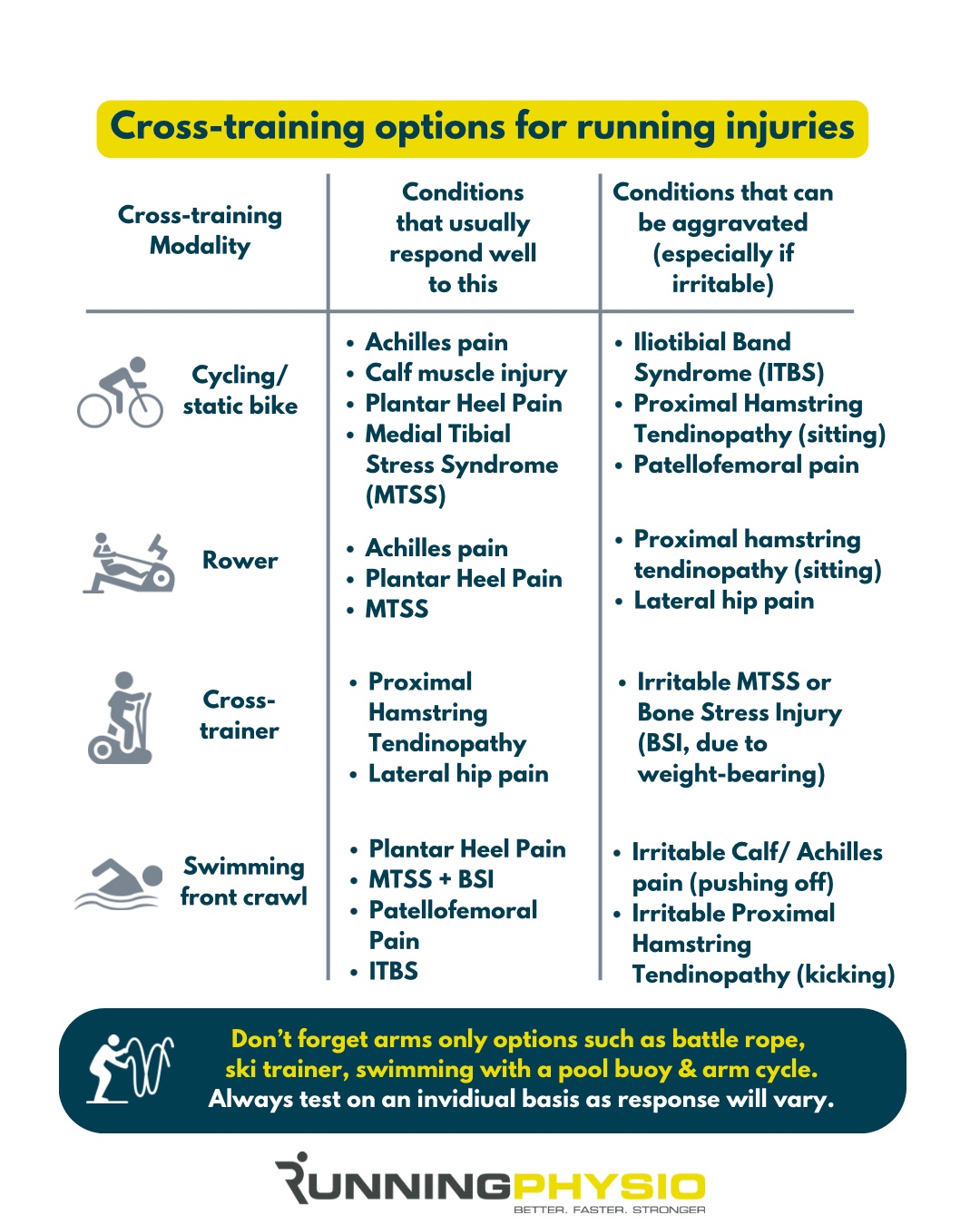Have you ever had one of those ‘good days’ when you walk into the clinic for your rehab session feeling energized and motivated, only to push yourself a little too hard? It feels great in the moment, driven by the excitement of progress and the desire to regain your former strength. However, the consequences often catch up with you the next day – stiffness, soreness, exhaustion, and perhaps even a setback in your recovery.
It’s a common experience for many undergoing rehabilitation and you’re certainly not alone in feeling this way. Many people face the same challenge of balancing motivation with mindful restraint. Recognizing this shared experience can be comforting, as it highlights that setbacks are not a sign of failure but a natural part of the recovery journey.
This is where the importance of a balanced, steady approach comes into play. Instead of riding the highs and pushing beyond your limits, pacing yourself helps maintain consistent progress without overexertion. It’s simply about being aware of your body’s limits and managing your energy wisely.
In this article, I discuss how to adopt the mindful rehabilitation strategy of pacing so you safeguard your recovery and build sustainable habits that support long-term health and well-being.
Table of Contents:
What is Pacing and Why Does it Matter?
Pacing is a strategy that involves managing your energy levels to prevent exhaustion and promote consistent recovery. You can think of pacing by relating it to your phone battery – if you completely drain the battery, you have to wait for it to recharge before you can use the phone again.
Similarly, if you push yourself to the point of complete exhaustion, your body will require more time to recover, potentially causing setbacks in your overall progress. On the other hand, if you use a portion of the battery and charge it regularly, your phone will always be ready to use.
This mirrors the idea of pacing, where you engage in activities within your energy limits and take regular breaks to recharge. By doing so, you maintain a steady level of productivity without overwhelming your system. Pacing helps to avoid the cycle of overexertion and prolonged recovery, supports better health outcomes, and fosters a balanced lifestyle that accommodates both activity and rest effectively.[i]
Let me introduce you to the concept of the ‘Boom and Bust’ activity cycle. This pattern occurs when individuals push themselves too hard on days they feel well, leading to exhaustion that necessitates extended recovery periods. Sound familiar? By practicing pacing, you can avoid these drastic highs and lows, fostering a more consistent and safe progression over time.
Signs You Might Be Overdoing it
When recovering from injury or managing a chronic condition, it’s common to want to do more on days when you feel good – but doing too much too soon can lead to setbacks. This is often referred to as the boom-bust cycle, where periods of overexertion are followed by increased pain, fatigue, or the need for extended rest.[ii],[iii] Signs you may be overdoing it include worsening symptoms after activity, increased soreness the next day, or inconsistent energy levels throughout the week. Learning to recognize these red flags early and adopting pacing strategies can help maintain steady progress and prevent unnecessary flare-ups.[iv]
Ask yourself:
- Did I feel okay during the activity, but notice more pain or fatigue later?
- Did I need more rest than usual to recover?
- Was my pain, stiffness, or swelling worse the next morning?
- Did I have to cancel or avoid something else because of how I felt?
- Did I feel frustrated, disappointed, or like I “set myself back”?
If you answered yes to two or more, it may be a sign that your current activity level is too much for your body right now. This doesn’t mean you’ve failed – only that it’s time to adjust your pacing strategy. Pacing involves balancing movement with intentional rest, so you can heal safely without triggering flare-ups. With time and support, pacing helps you build consistency, confidence, and long-term progress[ii],[iv].
How to Practice Pacing in Your Daily Life
Pacing is about planning your activity and rest in advance, not just reacting to pain when it appears. One effective method is to begin by identifying baseline activities – like walking or dishwashing – and timing how long you can comfortably do them. Then reduce that time by about 20% and set a timer to guide your movement-rest cycle.[iii],[v]
Break larger tasks into short chunks – work for a set time, then pause for a change in posture, gentle stretch, or a short walk.[iii],[vi] It’s also helpful to schedule rest periods ahead of time, alternating activity-heavy days with easier ones, which ensures consistency and helps avoid flare-ups.[vii],[viii]
Finally, track your activity–rest cycles and note how you feel – this builds awareness, helps you spot patterns, and empowers you to gradually increase your resilience over time.[ix] With consistent practice, pacing becomes a powerful tool to support steady progress through your rehab journey.
What Does “Recovery” Look Like?
Recovery isn’t just about lying on the couch – it’s an essential, active part of your rehabilitation journey. Active recovery, such as easy walks, gentle stretching, yoga, or cycling at a relaxed pace, promotes blood flow, flushes out metabolic waste like lactic acid, and keeps your muscles flexible without strain.[x],[xi] On the other hand, passive recovery, which involves rest, sleep, or therapeutic strategies like icing or compression, gives your body time to repair and restores energy reserves.[xii]
For those in neurological recovery, pacing becomes even more critical. Neurological rehab – whether for stroke, traumatic brain injury, multiple sclerosis, or spinal cord injury – relies heavily on creating optimal conditions for neuroplasticity, the brain’s ability to reorganize and form new connections through experience-dependent training.[xiii],[xiv]
Structured pacing helps avoid overwhelming the nervous system, allowing learning to consolidate and improving motor control over time. For instance, individualized, fatigue-controlled training post-stroke has demonstrated better functional recovery than exhausting or unsupervised exercise.[xv],[xvi] So, mixing active and passive recovery isn’t just physically beneficial – it lays the foundation for your nervous system to rebuild smarter, stronger, and more resilient.
Be Kind to Yourself: Progress Isn’t Always Linear
Healing doesn’t follow a straight line – and that’s completely normal. Some days you’ll feel stronger, more mobile, and full of energy; other days, your body might feel stiff, sore, or tired. These ups and downs are part of the recovery process, not a sign of failure.
It’s important to remember that even on days when you need more rest, your body is still doing important work beneath the surface – repairing tissue, calming inflammation, and restoring energy. Give yourself credit for showing up, even if all you can do is a short walk or a few deep breaths.
Being patient and gentle with yourself helps reduce frustration and prevents the temptation to overdo it out of guilt. Just like you wouldn’t expect a wound to heal overnight, allow your body – and your mind – the time it needs to rebuild. Consistency, not perfection, is what creates real, lasting progress.
When to Talk to Your Rehabilitation Team
Knowing when to reach out to your rehabilitation team is key to maintaining steady and safe progress. Consider contacting them if you experience persistent or recurrent pain that doesn’t improve after a few days, ongoing stiffness or reduced joint mobility, or unusual symptoms like numbness, tingling, or weakness – especially if those things limit your daily activities or workouts.[xvii]
Additionally, recovery after surgery, injury, or flare-ups is often smoother and faster with timely guidance from a physiotherapist. Don’t hesitate to reach out – even if you’re not sure whether it’s “bad enough” – your physio is there to help guide your healing journey, adjust your rehab plan, and give you peace of mind.
Conclusion
Pacing isn’t about doing less – it’s about doing what’s right for your body, at the right time. By learning to balance movement and recovery, you’re giving yourself the best chance to heal safely, avoid setbacks, and stay consistent with your progress.
Some days will feel easier than others, and that’s okay. Every time you choose to listen to your body, rest when needed, or stop before you hit your limit, you’re practicing smart, compassionate self-care.
Remember, rehab isn’t about perfection – it’s about progress over time. You’re not falling behind; you’re moving forward at your own pace, one mindful step at a time.
References
[i] Clinic, C. (2023, December 12). FND Hope Staff. Balancing Energy and Pacing. FND Hope. Published July 23, 2015.
[ii] Abramson A. 3 Ways to Make Psoriatic Arthritis Fatigue a Little Less Grueling. SELF. Published April 10, 2024. Accessed July 7, 2025. https://www.self.com/story/psoriatic-arthritis-fatigue
[iii] Psychology Tools. Pacing for Pain. https://www.va.gov/PAINMANAGEMENT/Veteran_Public/Veteran_docs/Pacing-formula.pdf
[iv] Arthritis Foundation. Pacing Yourself With Arthritis. www.arthritis.org. https://www.arthritis.org/health-wellness/healthy-living/managing-pain/fatigue-sleep/what-it-really-means-to-pace-yourself
[v] Forster A. Bradford Teaching Hospitals NHS Foundation Trust.; 2023. https://www.bradfordhospitals.nhs.uk/wp-content/uploads/2023/03/Pacing-and-How-to-Pace.pdf
[vi] University of Michigan. Activity Pacing. Umich.edu. Published 2023. https://fibroguide.med.umich.edu/pain-care/self-care/pacing/
[vii] Live Well With Pain. Pacing – Live Well with Pain. Live Well with Pain. Published November 21, 2023. https://livewellwithpain.co.uk/practitioner-resources/10-footsteps/pacing/
[viii] Geraghty M, U.S. Pain Foundation. Module 7.7: How to Pace with Chronic Pain the Following Pacing and Management Guides Can Be Found on MEAction.net. Check out Meaction.net/Resource/Pacing-And-Management-Guide/ • Pacing and Management Guide • Pediatric Pacing & Management Guide • Clinician’s Pacing and Management Guide.; 2023. Accessed July 7, 2025. https://www.painconnection.org/wp-content/uploads/2023/11/Module-7-How-to-Pace-with-Chronic-Pain_US-Pain-Foundation.pdf
[ix] Guy L, McKinstry C, Bruce C. Effectiveness of Pacing as a Learned Strategy for People With Chronic Pain: A Systematic Review. American Journal of Occupational Therapy. 2019;73(3):7303205060p1. doi:https://doi.org/10.5014/ajot.2019.028555
[x] Andrushchenko V. The Science of Recovery: Active Recovery vs. Complete Rest – VSA Blog. VSA Blog. Published May 22, 2025. Accessed July 7, 2025. https://vsaworld.com/blog/the-science-of-recovery-active-recovery-vs-complete-rest/
[xi] Chertoff J. Securly – Geolocation sharing. Healthline.com. Published December 18, 2019. https://www.healthline.com/health/active-recovery
[xii] Shandrow M. Active vs Passive Recovery. Asana Recovery. Published December 19, 2024. Accessed July 7, 2025. https://asanarecovery.com/active-vs-passive-recovery/
[xiii] Role of Neuroplasticity in Neuro-rehabilitation. Physiopedia. Published 2021. https://www.physio-pedia.com/Role_of_Neuroplasticity_in_Neuro-rehabilitation
[xiv] Carr J, Shepherd R. The changing face of neurological rehabilitation. Revista Brasileira de Fisioterapia. 2006;10(2):147-156. doi:https://doi.org/10.1590/s1413-35552006000200003
[xv] Xu Y, Peng Y, Yao Y, et al. Poststroke rehabilitative mechanisms in individualized fatigue level-controlled treadmill training — a Rat Model Study. arXiv.org. Published 2025. Accessed July 8, 2025. https://arxiv.org/abs/2502.14534
[xvi] Barrett AM, Mooyeon Oh-Park, Chen P, Ifejika NL. Neurorehabilitation. Neurology Clinical Practice. 2013;3(6):484-492. doi:https://doi.org/10.1212/01.cpj.0000437088.98407.fa
[xvii] Bedosky L. 11 of the best activities to do on active recovery days. SELF. Published March 21, 2022. https://www.self.com/story/best-activities-for-active-recovery-day










